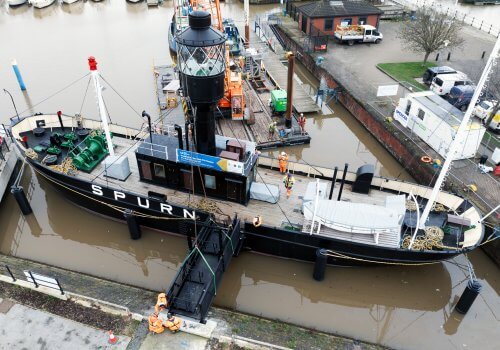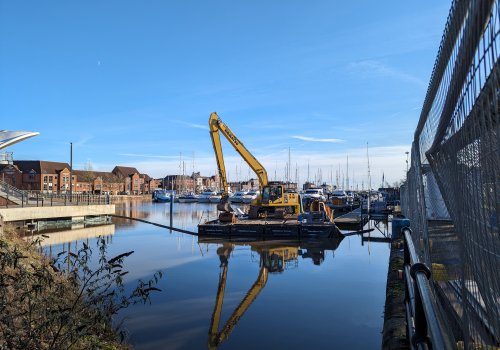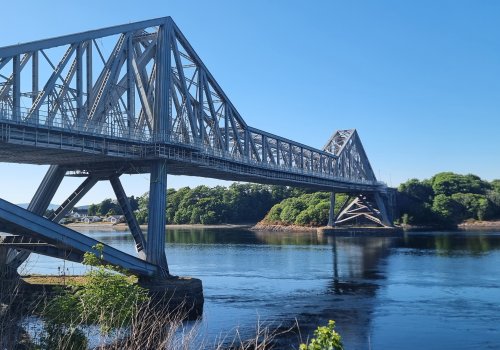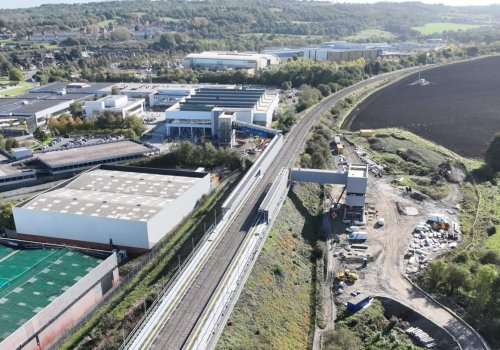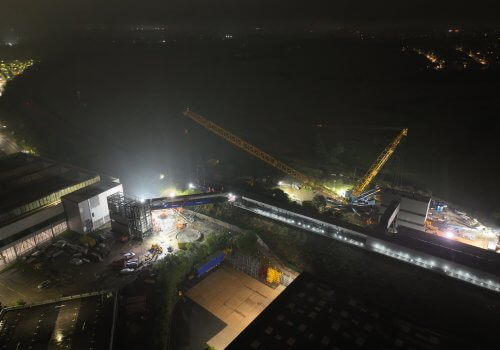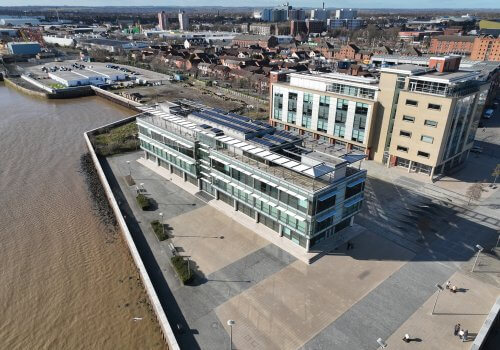Spencer Rail was contracted to deliver a project to reinstate two 10-car electrified sidings, a BV 9.25 turnout, the associated signalling and ETE works, and a new driver’s walkway from the sidings to Guildford Station, utilising an old disused underpass.
Guildford North Box Sidings (GNBS) is situated London side of Guildford Station between the Cobham lines and the Portsmouth main lines.
There were originally two sidings with a reception road and a head-shunt which had been out-of-use for a number of years.
The works were originally planned to start in February 2013 and be completed by December 2013, utilising mid-week night and weekend route possessions with one abnormal possession at a weekend. All spoil and new materials would be delivered and taken away using rail haulage as is usual with a normal track renewal.
And so it begins…
Spencer Rail started to clear the sidings ready for the spoil to be removed by rail in March 2013. Due to unforeseen logistical problems, rail haulage was now not available for the foreseeable future. At this point, the project was wound down while new avenues were looked at.
At the end of November 2013, the project was instructed to start again and look at delivering the final solution by the end of March 2014, ready for the timetable change in May 2014. Rail haulage was still not an option and so the only way in which delivery of materials could take place was via road.
Sam Wadsworth, programme director at Spencer Rail, said: “Road haulage presented a major issue in that, due to restrictions on the site access, it was limited in both time and size of vehicle.
“The site could only be accessed by road via one route through a third party’s, Transformers and Rectifiers’, land where access was only agreed via a “gentleman’s agreement” and that if that third party wanted to they could refuse both our and Network Rail’s access through their land at any time.
“Network Rail have an Off –Track site situated at the end of the road where the access point for the siding is situated. Alongside this, the road to the site from the entrance of Transformer and Rectifiers’ land was through a limited width area and then a steep gradient followed by a tight turn into the access. We were also not permitted to use the Network Rail Off-Track area as they had deliveries day and night and required 24hr access.”
Several meetings were held with Transformer and Rectifiers, Network Rail, Network Rail Off-Track and Spencer Rail representatives and a delivery strategy was agreed. All deliveries were to happen between the hours of 7pm and 6am.
The materials to be delivered in this way were:
• 2,300t ballast
• 768 sleepers
• 1x BV 9.25 turnout
• 116 x 9.144m rails (conductor and plain)
• 12 x lighting columns
• Concrete driver’s walkway and concrete trestles
• 1no Welfare cabin
Alongside this there was also all the spoil to be taken away and other small deliveries, all of which had to happen at night.
The first task was to remove all of the existing spoil. The specification asked for 200mm ballast and 100mm of sand formation and so therefore a 300mm dig was asked for.
Taking this into account and the fact that all spoil had to be removed by 20-tonne rigid lorries overnight it meant that Spencer Rail could accommodate, in a 12-hour shift, roughly eight lorries per night as the spoil had to be delivered to a specialised tip that was open during the night.
This allowed roughly 160 tonnes per night or 800 tonnes per week meaning the whole task would take between three and four weeks.
Sam said: “After the first night’s work it was clear that eight lorries per night would not be possible due to their availability, the turnaround time to the tip, the time it took to position and load each lorry and then the added complication of the works having to be done during line blocks. All of this allowed us to actually have around three hours loading time or roughly four lorries per night if spoil was stockpiled.”
The team continued in this vain, however line blocks were not being granted and this meant that Spencer Rail was paying for machines, men and lorries each night without any works being carried out. It then began to rain – it stopped in February 2014.
Spencer Rail used two dumpers and three excavators to make the most of the time allowed, however, as the rain kept falling the site became wetter and wetter. The spoil that was being removed was becoming saturated and, due to the water content, the lorries were having to restrict the amount loaded due to the excess weight.
By Christmas 2013, Spencer Rail had only loaded approximately one third of the spoil and had to stop the works due to safety concerns.
On the right road…
Work started again on the January 7, 2014. With the rain continuing to fall, Spencer Rail could only load with spoil that had been removed from site and stockpiled to let the water drain out.
This came to head when later in the month a lorry loaded with spoil ran over the kerb at the top of the access road and, due to the water content, spilt over the side of the lorry and ran down the hill.
Approximately 15 tonnes of saturated spoil was deposited on the access road, the site was totally waterlogged and the lorries were refused to take any further spoil.
It was now towards the end of January 2014, the project was due to complete by the end of March and the spoil removal was not yet complete. The whole project was on hold due to safety concerns in that the site was too waterlogged. The tip used for our spoil collection had also closed due to flooding.
Up until this date the team had been working under line blocks because the site was situated between the up and down Portsmouths and the up and down Cobhams.
Spencer Rail discussed potential options with all parties concerned and decided that if the correct control measures were put in place it could work using Adjacent Line Open (ALO) working practices.
At the beginning of February, the site was ALO assessed and control measures were put in place. This allowed the team to work 24 hours a day. The rain also started to ease and this then allowed the team to start the spoil removal again.
Sam said: “Due to the time constraints we were now loading spoil in one area of the site and unloading ballast in another area. I had also approached Network Rail about the use of a special GeoTex blanket that negated the use of sand. This would reduce the number of lorry runs required by about 50 which allowed a considerable amount of time to be saved.
“The Civils and the P-Way teams were now working together to deliver the works. Access was arranged with Network Rail each week, any works requiring machines was ALO assessed and regular updates with meetings to the surrounding properties including Transformer and Rectifiers, The University and the local Premier Inn.”
During the wet period between December and February Spencer arranged road sweepers to clean the approach roads, Transformer and Rectifiers’ yard and the access road to site and Network Rail Off-Track compound.
Once the spoil removal was complete, the walkway trestle bases had started to be poured and the Geo Tek terram was laid with new ballast being unloaded.
The next deliveries to take place were the sleeper and rail deliveries with the S&C. Once all the bottom ballast and rails had been delivered and installed the buffer-stops (again road delivered) were installed and the final top stone delivered. The raised walkway, lighting and authorised walking route were installed again with issues that were addressed by working together with Network Rail.
The project team received compliments from a number of external parties on the way in which the project had controlled the access arrangements and the noise levels.
Sam said: “GNBS was a hugely challenging project that at times you could not see the end, but due to the commitment and help from the project team, Network Rail, Network Rail Off-Track, South West Trains, Transformer and Rectifiers and all other interested parties, a large rail project has been delivered by road.”
